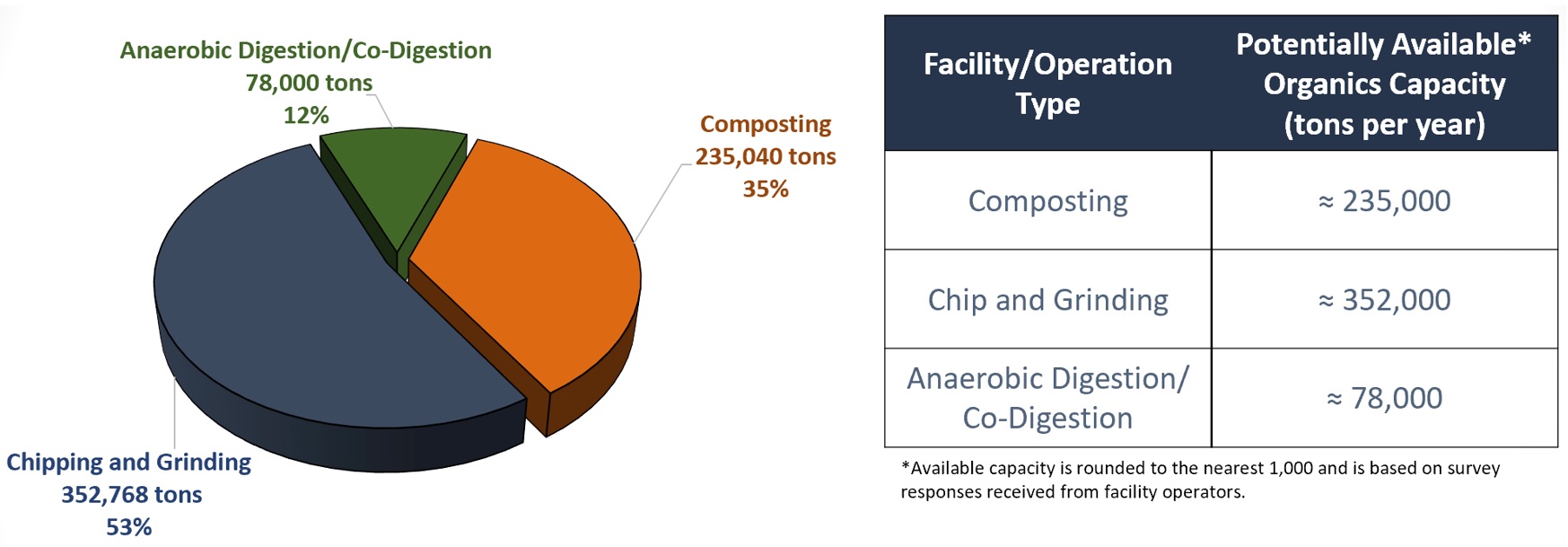In order to comply with SB 1383 regulations, which require a County to collect capacity planning information from jurisdictions and submit to CalRecycle by August 1, 2024, we are requesting jurisdictions to please submit jurisdictional information to the County no later than June 7, 2024.
Please visit the
Submittal page for submitting your jurisdictional data.
Organic waste is material that comes from living organisms such as, but not limited to, food, food scraps, food soiled paper, paper products, yard or green waste, wood, manure, and organic textiles like cotton.
For the purposes of SB 1383 Capacity Planning, the materials that are included for reporting are food, green waste, landscape and pruning waste, wood, paper products, printing and writing paper, digestate, and biosolids.
The following is a breakdown of the estimated amounts of organic waste generation, disposal and diversion (in million tons per year) from the 2020 Countywide Organic Waste Management Plan Annual Report.
The following are the organic waste material types that are currently being disposed by residents and businesses in Los Angeles County. The percentages are based only on the types of organic waste, not the entire disposal stream. The material types shown below are the ones listed for capacity planning purposes in the SB 1383 Regulations.
The following is a breakdown of the estimated maximum potentially available processing/recycling capacities by process type (within Los Angeles County) from the 2020 Countywide Organic Waste Management Plan Annual Report. “Potentially available” processing/recycling capacity means the capacity remaining after deducting a facility's average throughput from its maximum capacity (or capability), as reported by the facility operator in a survey. The County will be conducting new facility surveys in early 2022 to obtain updated capacity information from the Southern California Region.
The County will make the data available when the survey data is complete.

The following is a breakdown of the estimated maximum potentially available processing/recycling capacities by process type (outside of Los Angeles County, in nearby Counties) from the 2020 Countywide Organic Waste Management Plan Annual Report. “Potentially available” processing/recycling capacity means the capacity remaining after deducting a facility's average throughput from its maximum capacity (or capability), as reported by the facility operator in a survey. The County will be conducting new facility surveys in early 2022 to obtain updated capacity information from the Southern California Region. The County will make the data available when the survey data is complete.

Many businesses that sell food, such as grocery stores and restaurants, have leftover surplus edible food that can be recovered and donated to hungry people in need rather than thrown out and disposed. SB 1383 and the County's Ordinance requires large edible food generating businesses to partner with edible food recovery agencies to donate all of their surplus edible food. Los Angeles County Public Works is creating a database and map of all edible food recovery agencies in the County to assist cities and businesses located throughout the County with finding an agency nearest them.
Visit
FoodDROPLA.com for more information.